The collaboration of trumpeter Miles Davis with Gil Evans’ orchestral arrangement and composition elevated “the new thing,” freeing modern jazz from big-band swing with lyrical-literary French horns and tuba and Davis taking up the flugelhorn.
Twinned Vision: the Miles Davis and Gil Evans collaboration
By Harvey Pekar from Metroactive Music
THE ACCOMPLISHMENTS of Miles Davis and Gil Evans rank with those of Louis Armstrong/Earl Hines and Charlie Parker/Dizzy Gillespie as among the most noteworthy two-man efforts in jazz history. Miles Davis and Gil Evans: The Complete Columbia Studio Recordings (six CDs, or, for audiophiles, 11 LPs from Mosaic) illustrates anew what a great team they made.
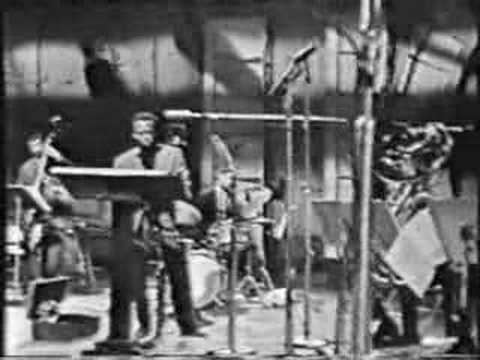
Watch this video on YouTube
Miles Davis with Gil Evans Orchestra in 1959 doing “the Duke” and “Blues for Pablo.”
These innovative recordings–including the albums Miles Ahead, Porgy and Bess and Sketches of Spain, along with alternative takes, never-before-released material and selections from Quiet Nights–have been enormously influential. The Columbia material had, in particular, a significant impact on the development of the modal-jazz movement.
Born in 1912 in Toronto, Evans grew up in British Columbia, Washington state and Stockton, Calif., where he formed a local band later taken over by popular 1930s vocalist Skinnay Ennis. He remained to write arrangements for Ennis and later worked for Claude Thornhill’s band.
Thornhill’s outfit was incorrectly dismissed by some as a sweet dance band because it often played quietly; it was actually revolutionary, employing two French horns and a tuba and emphasizing vibratoless playing. Evans wrote stimulating arrangements for Thornhill of the bop tunes “Donna Lee,” “Yardbird Suite” and “Anthropology.”
STORY: Music of the Tree Rings: Sound of a Wild Forest
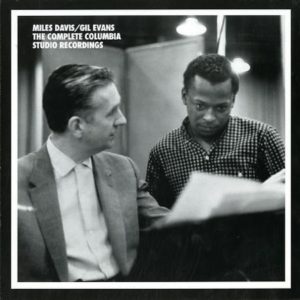
From Charles Edward Smith on liner notes for Miles Davis – Porgy and Bess: “In the late 1940s, when Gil Evans and Gerry Mulligan helped Miles set up an historic nine-piece band that played briefly at New York’s Royal Roost, the idea of “the new thing” (as some musicians called modern jazz) having more accommodation than that of a “hitch-hike” in a swing band had barely been thought of… Gil Evans was preoccupied with providing an adequate orchestral setting for the new sounds of jazz. He did this not merely in introducing new instruments (such as the French horns) and adding new colors to the orchestral palette, but in freeing modern jazz from big-band swing that often had a restrictive influence on the projection of the new tonal and rhythmic concepts.”
The nonet, influenced by the Thornhill/Evans concept, included tuba and French horn, which gave a unique color to the orchestra sound and, beyond that, were used by Davis’ arrangers as active ensemble voices instead of being employed mainly as a rather static bottom in ensemble passages.
By the mid-1950s, Davis, Lewis and Mulligan had established themselves among the most popular jazzmen. Evans, however, remained a virtual unknown, although French critic Andre Hodeir, in his brilliant Jazz, Its Essence and Evolution, did go to great lengths to praise Evans’ work with Davis, stating “[His arrangement of] ‘Boplicity’ is enough to qualify Evans as one of jazz’s great composer-arrangers.”
STORY:Jack Kerouac’s Lowell Blues: Cast-off Boots of Time
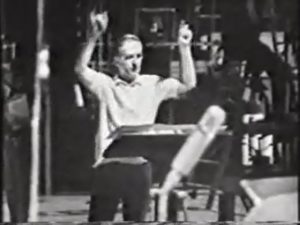

Miles Ahead of Their Time
SIGNIFICANTLY, Hodeir wrote the liner notes for the first Davis/Evans LP, Miles Ahead, cut in 1957 for Columbia. This was a concerto setting for Davis, who was the only soloist–on flugelhorn, instead of his normal trumpet–backed by a big band containing flute, bass clarinet, French horns and tuba. The emphasis here, as on all Davis/Evans collaborations is on lyricism.
Aside from “Carisi’s Springsville,” most of the carefully chosen selections are taken at slow and medium tempos. They include lovely compositions by J.J. Johnson (“Lament”), Ahmad Jamal (“New Rhumba”), Dave Brubeck (“The Duke”), Kurt Weill (“My Ship”) and Evans (“Blues for Pablo”).
Davis’ playing and Evans’ charts fit together perfectly, both men being meticulous, subtle craftsmen, sensitive to each and every nuance. Among the delightful characteristics of Miles Ahead is Evans’ connection of the individual tracks with brief, exquisite musical passages, rather than with the usual silence between selections.
Another beneficial consequence of this date is Davis’ flugelhorn. Before him, virtually no jazzman, aside from Shorty Rogers, used it. After the release of Miles Ahead, however, many trumpeters began playing it, and today, the instrument can often be heard in jazz bands.
STORY: Pauline Oliveros and her Beautiful Canopies of Sound
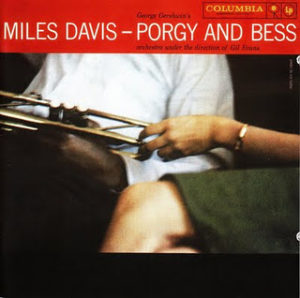
And check out the dialogue between Davis and the orchestra during “Summertime,” one of the most musically literate you’ll ever hear. Davis’ playing is as moving and passionate as it’s ever been, but elegantly controlled as well.
At this time, Davis emphasized musical economy a great deal. He improvised rather spare solos and put a great deal of thought into airing out his spots with rests. Davis was then moving toward the creation of compositions that were based on uncluttered foundations that would allow jazzmen to improvise at greater length on each component–a chord or scale or mode–of the structure. This style, he thought, would lead to more melodic improvisation than the complex chord progressions employed by the modern jazzmen of 1945-57.
Davis and Evans saw eye to eye on the need for sparer foundations, as the Porgy and Bess recording illustrates. In a 1958 interview, Davis pointed out, “When Gil wrote the arrangement of ‘I Loves You, Porgy,’ he only wrote a scale for me to play. No chords. And that other passage with just two chords gives you a lot more freedom and space to hear things.”
Iberian Fantasy
DURING 1959 to 60, Davis and Gil Evans cut Sketches of Spain, inspired by a love of Spanish music. Again they stressed lyricism and economy. Davis’ solo cadenza on “Saeta” suggests the singing of a Jewish cantor or Muslim muezzin, Semitic music having had a major impact in the Iberian peninsula.
STORY: Art of Collective Madness in Salvador Dalí’s ‘Impressions’
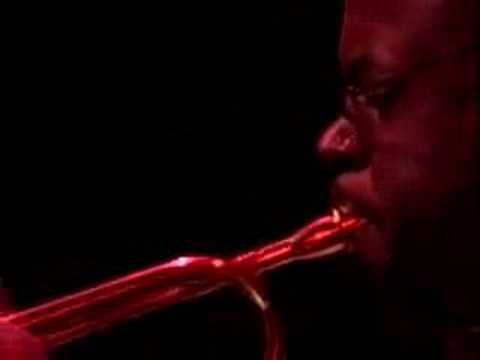
Watch this video on YouTube
Evans adapted “Concierto de Aranjuez,” the record’s longest track, from a guitar concerto by Rodrigo. Evan’s handling of it represents quite an advance in taste and musicality over the way arrangers “jazzed the classics” during the swing era.
Though produced as the bossa nova was influencing pop music in the United States, Quiet Nights (1962) wasn’t just an effort to cash in on a trend. Reflecting the earlier affinity shown for Iberian music, Evans invests the same care in these arrangements as he did on Sketches of Spain. Davis, whose tone had broadened and become warmer, and whose upper register work had improved since the mid-’50s, certainly plays inspired solos.
Partly because Quiet Night did not have the revolutionary impact or variety of the first three, however, it’s not referred to much these days. It shouldn’t be dismissed, though, containing as it does a great deal of musical richness.
STORY: Pablo Picasso: Dangerous Art and Political Posturing in Paris
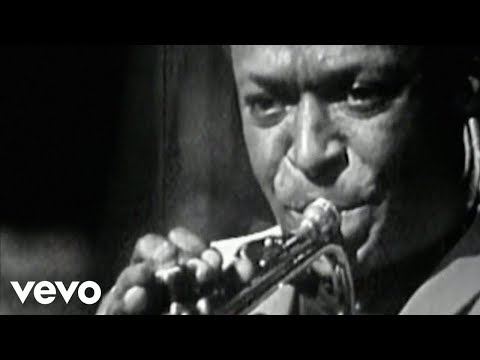
Watch this video on YouTube
Live Video from April 1959 of Miles Davis (trumpet) and John Coltrane (tenor sax) with background by the Gil Evans Orchestra performing “So What.” From Miles Davis’ album, “Kind Of Blue.”
Also from 1962 are three odd combo selections written by Bob Dorough and loosely arranged by Evans. “Blue Xmas” and “Nothing Like You” feature Dorough’s humorous, understated vocals. “Devil May Care” contains excellent solos by Davis and tenor saxophonist Wayne Shorter.
In 1963, Davis recorded “The Time of the Barracudas,” a piece credited to him and Evans, which had been written to accompany a live theater piece. A multi-themed and metrically varied composition, it contains relatively little improvisation, but Evans’ varied orchestral colors and textures sustain interest throughout.
The final recorded Davis/Evans collaboration, the utterly unique “Falling Water” (1968), forecasts the fusion movement with its use of electric and Hawaiian guitars, mandolin and Wurlitzer electric piano. Timpanist and marimbaist Warren Smith adds to the piece’s distinctiveness with playing that lends it a gamelan-like quality. A lovely, atmospheric piece, “Falling Water” is also extremely important in tracing Davis’ evolution toward and beyond Bitches’ Brew.
Updated 21 February 2021










Pingback: Big Noise from Big Band Drummer Gene Krupa